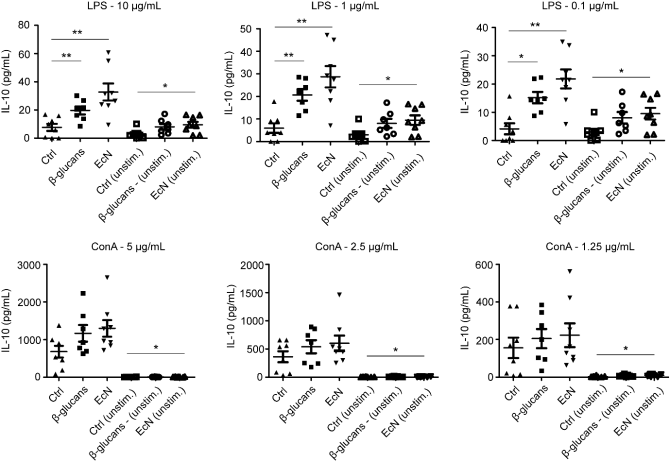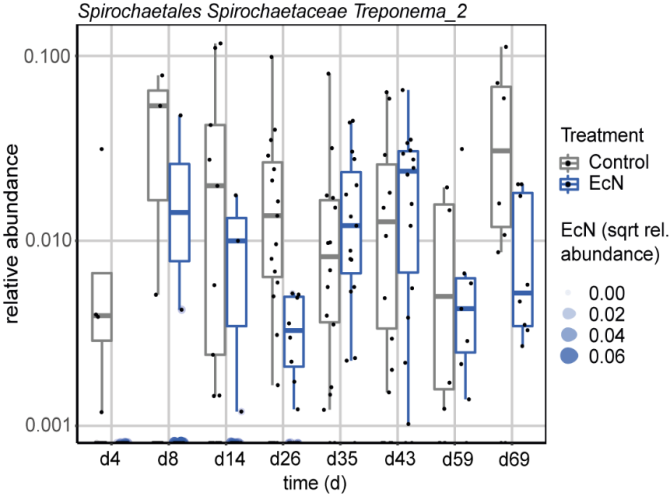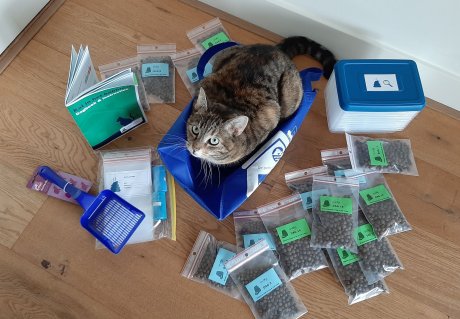
A Window of Opportunity – How feed additives modulate the porcine gut microbiota and immune system in early life
WIAS magazine - Winter edition 2021
Research Highlight.
In early life and around weaning piglets are susceptible to infection due to abrupt dietary, social and environmental changes that may directly or indirectly impact gut health and animal performance. In the past, antibiotic growth promoters (AGPs) were intensively used in the livestock industry to prevent the development of gastro-intestinal disorders and to optimise animal performance. However, because of the worldwide concern on the emergence of multi-drug resistant bacteria, the use of in-feed AGPs has been banned in the European Union since 2006. As a result, sustainable alternatives to in-feed AGPs that promote animal health and performance received great interest.
In the last few decades, researchers have been studying the effects of several promising microbial and non-microbial nutritional factors for pigs. Pre- and probiotics, for example, have been shown to influence the porcine gut microbiota, improve gut epithelial barrier function and modulate the immune system. It is evident that these complex systems are inherently linked to each other and are important determinants of health and disease. However, dietary interventions are mostly administered post-weaning. During this period, feed additives are less likely to exert strong effects because with age there is increasing resilience of the gut microbiota to (dietary) perturbations. Since the gut microbiota and the immune system of neonatal piglets still have to be largely established, we hypothesized that early life serves as a ‘window of opportunity’ to modulate the gut microbiota, the gut epithelial barrier, and the immune system with the aim to make pigs more resilient to infections during the weaning period and later in life (1).
To investigate this, we designed and executed a 10-week long in vivo study in conventionally housed piglets (2). From day 2 after birth until day 44 post-weaning, piglets perorally received yeast-derived β-glucans, E. coli Nissle 1917 (EcN) or a control treatment every other day. To study the gut microbiota composition (in collaboration with Hugo de Vries, Laboratory of Microbiology) and immune function, faeces, digesta, blood, and tissue samples were collected at different time points during the study. Overall, yeast-derived β-glucans and EcN affected the faecal microbiota composition (e.g., reduced (Proteobacteria) α-diversity) and several immune parameters (e.g., enhanced interleukin-10 (IL-10) production by stimulated cells of the mesenteric lymph node, Figure 1). One particularly interesting observation was the link between the amount of EcN present in the faecal sample and the relative abundance of Treponema_2, i.e., samples with a relative abundance of EcN higher than 0.05% do not contain taxa within the Treponema_2 genus (Figure 2). Two of the Treponema_2 amplicon sequence variants (ASVs) within our dataset seemed to be close relatives to Candidatus Treponema suis, which has been associated with colitis in pigs. Furthermore, these Treponema_2 ASVs showed to be particularly abundant in the first two weeks post-weaning (day 35 and day 43), a period during which piglets are particularly vulnerable to develop post-weaning diarrhoea. With this in mind, EcN’s ability to lower Proteobacteria diversity (pre-weaning), its seemingly antagonistic effect against Treponema, and its ability to enhance the production of the anti-inflammatory cytokine IL-10 by ex vivo stimulated mesenteric lymph node (MLN) cells, may imply favourable effects of EcN on the porcine gut microbiota composition and the immune system, which would be particularly beneficial for the sensitive weaning and early post-weaning period.

Figure 1. IL-10 production by ex vivo stimulated MLN cells from β-glucans and EcN-treated animals. MLN cells were stimulated with different concentrations of lipopolysaccharide (LPS) or Concanavalin A (ConA), or left unstimulated (cell culture medium only) for 24 h. Results from the same unstimulated cells are presented in this figure on a low pg/mL scale (upper figures) or high pg/ml scale (lower figures). Significant differences between the treatment groups are indicated by asterisks (**; p < 0.01 and *; p < 0.05). No differences in IL-10 production by MLN cells were observed post-weaning. Every point represents a single animal from a different pen (n = 7 or 8 per treatment group) and error bars represent standard deviations. Statistical analysis was performed for every time point (Unpaired T-test). Data were checked for normal distribution and equal variances and log-transformed when required.

Figure 2. Relative abundance of Treponema_2 in faeces of pigs that received EcN or a control treatment. For each sample, the relative abundance of the EcN-specific ASV is visualized by tinting the outer circle (a darker tint means a higher abundance of EcN).
In line with our hypothesis, most effects were observed in the pre-weaning period, which suggests that the pre-weaning period indeed serves as a ‘window of opportunity’ to alter the gut microbiota and immune system through diet. Our observation that from the moment that pigs are weaned, the effects from dietary interventions on the gut microbiota disappear is in line with a recent study from Choudhury et al. (Host-Microbe Interactomics Group, Wageningen University & Research). They demonstrated that access to a pre-weaning fibrous diet affected the alpha and beta diversity in the pre-weaning phase, but these differences were no longer observed post-weaning (3). This has likely to do with the major shift in microbiota composition that is induced by the transition to a weaner diet at weaning. Furthermore, and in line with the results from our earlier published in vitro study (4), we demonstrated that EcN is a stronger immunostimulant than yeast-derived β-glucans.

Figure 3. Critical window of postnatal development of the porcine gastrointestinal tract. In the first four weeks of life, the health status of the piglets is highly dependent on immunoglobulins obtained from sow colostrum/ milk (passive immunity). Simultaneously, piglets are exposed to environmental and dietary antigens and microbes, thereby developing their gastrointestinal barrier and immune system (acquired immunity). At this time, the gastro- intestinal tract also exhibits a high degree of plasticity. At weaning (around week 4), piglets are separated from the sow, resulting in abrupt dietary, social, and environmental changes. At this stage, the immune system of the piglet is not yet fully established, while the intake of sow milk has stopped. The abrupt changes associated with weaning together with a relatively ‘immature’ immune system cause an ‘immunity gap’. Adapted from Moeser et al. 2017.
Taken together, our results suggest that early-life dietary interventions or strategies can indeed modulate the development of the porcine gut microbiota, gastrointestinal barrier, and the (mucosal) immune system, potentially resulting in a less pronounced ‘immunity gap’ (Figure 3). According to literature, this ‘immunity gap’ coincides with weaning, a period during which piglets are more susceptible to develop weaning-associated problems such as post-weaning diarrhoea. Therefore, by utilizing the ‘window of opportunity’ in early life, dietary interventions or strategies like the administration of EcN may have potential to reduce such weaning- associated problems. This research also offers new insights into the effects of dietary interventions on biological mechanisms that underpin health outcomes in early life, but as with all research, multiple questions remain unanswered and require further investigation. As evidence is growing, I think most of us will agree that it is important to invest in early life from both an animal health as well as an animal welfare perspective. Just as the saying goes, ‘a good beginning is half the battle won’.
References:
1. Geervliet M. A Window of Opportunity: Modulation of the Porcine Gut Microbiota and Immune System by Feed Additives in Early Life (PhD Thesis). Wageningen University & Research, 2021. https://doi.org/10.18174/553257
2. de Vries, H., Geervliet, M., Jansen, C.A., Rutten, V.P.M.G., van Hees, H., Groothuis, N., Wells, J.M., Savelkoul, H.F.J., Tijhaar, E., Smidt, H. Impact of Yeast-Derived β-Glucans on the Porcine Gut Microbiota and Immune System in Early Life. Microorganisms 2020, 8, 1573. https://doi.org/10.3390/microorganisms8101573
3. Choudhury, R., Middelkoop, A., Boekhorst, J., Gerrits, W.J.J., Kemp, B., Bolhuis, J.E. and Kleerebezem, M. (2021), Early life feeding accelerates gut microbiome maturation and suppresses acute post-weaning stress in piglets. Environ Microbiol, 23: 7201-7213. https://doi.org/10.1111/1462-2920.15791
4. Geervliet M., Lute L.C.P., Jansen C.A., Rutten V.P.M.G, Savelkoul H.F.J., Tijhaar E. (2020) Differential immunomodulation of porcine bone marrow derived dendritic cells by E. coli Nissle 1917 and β-glucans. PLoS ONE 15(6): e0233773. https://doi.org/10.1371/journal.pone.0233773






